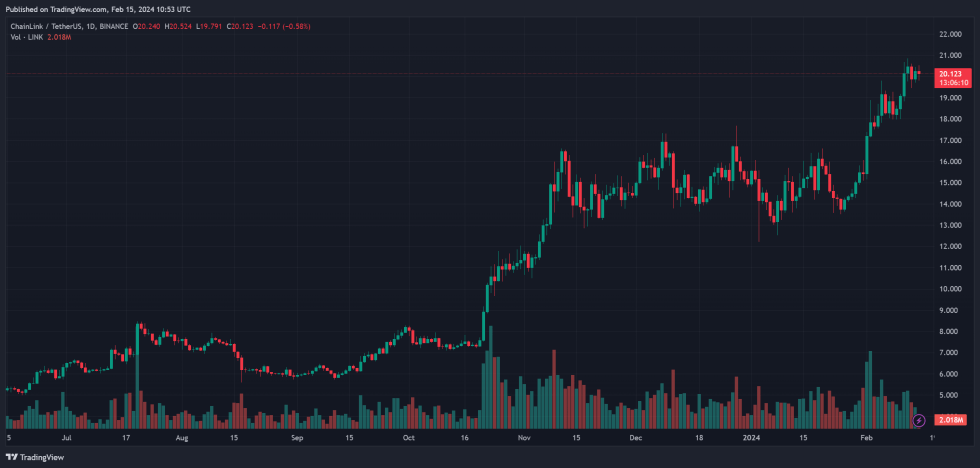- February 15, 2024
- Posted by: admin
- Category: BitCoin, Blockchain, Cryptocurrency, Investments
Spanish telecommunications giant Telefonica recently announced its partnership with Chainlink, a move aimed at combating Web3-related exploits, including SIM card fraud. Considering the damage these exploits have inflicted on the crypto space, this is undoubtedly a welcome development.
How This Partnership Will Boost Web3 Security
Telefonica mentioned integrating Chainlink, the decentralized Oracle network, to strengthen Web3 security with the GSMA Open Getaway. GSMA Open Gateway is a “framework of common network APIs (Application Programming Interface) designed to provide universal access to operator networks for developers.”
Telefonica integrating Chainlink will “enable the secure connection of Web3 smart contracts” with the help of the GSMA Open Gateway API. One of the APIs supported by GSMA includes SIM SWAP, which will be the first use case introduced in this partnership. The SIM swap API allows developers to integrate this functionality into their applications.
In this instance, Chainlink, already known for connecting blockchain-based smart contracts to real-world data through its oracles, will act as the intermediary, supplying Web3 applications with data from the SIM swap API. These data will include information like date and time stamp, which shows when a SIM associated with a phone number was last changed.
These Web3 applications can easily detect and prevent any wallet takeover or fraudulent transaction from SIM Swap attacks. Telefonica added that this will mitigate risk beyond transaction security, “addressing two-factor authentication (2FA) and fraud detection in Web3 dApps and DeFi services.”

Strengthening Web3 Security
Security breaches in the Web3 space continue to occur at an alarming rate. Bitcoinist recently reported how the infamous phishing group Angel Drainer drained 128 wallets worth about $403,000. Specifically, the SIM swap attacks, which the Telefonica-Chainlink partnership hopes to address, led to the loss of over $13.3 million worth of crypto in just four months last year.
Interestingly, the FTX breach, which led to the loss of over $400 million worth of crypto, was also recently revealed to have occurred due to a SIM swap with the attackers sim-swapping the details of an FTX employee. Therefore, this recent partnership is a significant step forward as stakeholders in the industry continue to find a lasting solution to these exploits.
Once that happens, the crypto industry can be sure that more users will be willing to invest their funds without fearing a significant breach.
Cover image from Unsplash, Chart from Tradingview